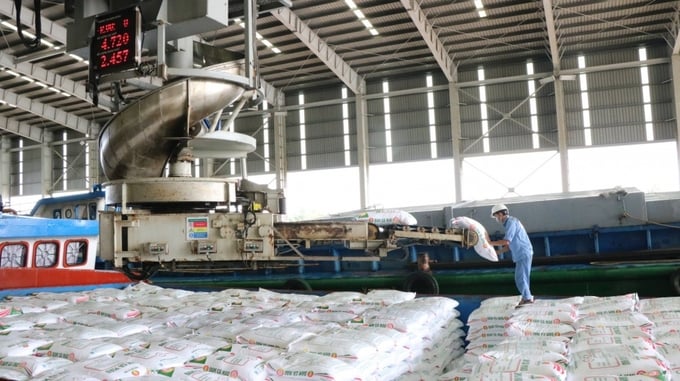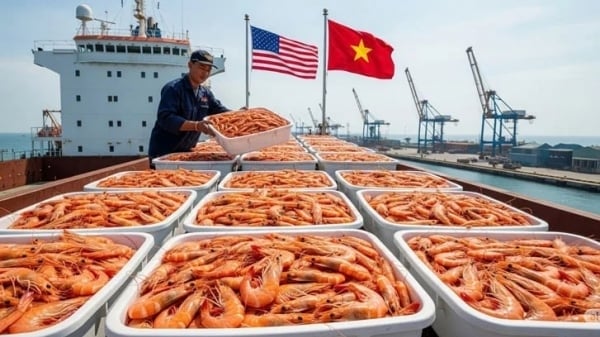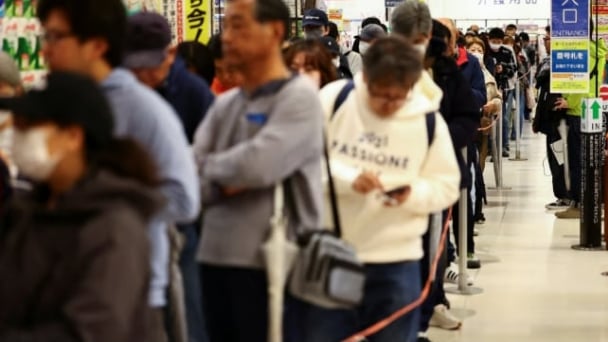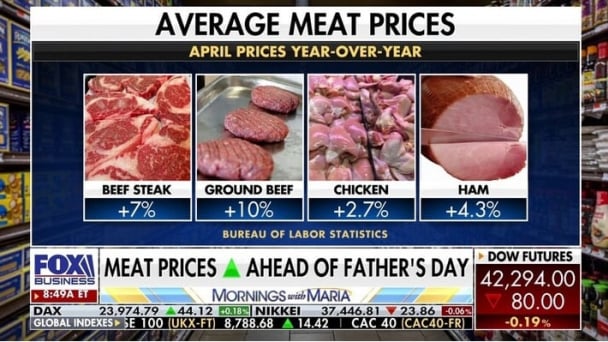June 6, 2025 | 11:29 GMT +7
June 6, 2025 | 11:29 GMT +7
Hotline: 0913.378.918
June 6, 2025 | 11:29 GMT +7
Hotline: 0913.378.918

Fertilizer exports are growing again this year.
Vietnam's fertilizer exports set a record of over 1 billion USD in 2022, driven by a significant global price surge for fertilizers. During that year, the export volume grew by 29.4% compared to 2021, reaching 1.75 million tons, while the export value saw an even more impressive increase of 96%, totaling 1.096 billion USD - nearly doubling. According to the World Bank, when fertilizer prices peaked in 2022, the fertilizer price index (which measures the ratio of fertilizer prices to food prices) had almost doubled compared to the long-term average.
However, in 2023, global fertilizer prices experienced a sharp decline, which had a major impact on Vietnam’s fertilizer export performance. In particular, while the export volume fell by 12%, totaling 1.5 million tons, the export value dropped by a significant 41%, reaching only 649 million USD.
After a year of substantial losses, fertilizer exports have shown signs of recovery starting in 2024. Data from the General Department of Customs reveals that in the first nine months of the year, Vietnam exported more than 1.29 million tons of fertilizer, with a total value of 531 million USD. This marks an 8.5% increase in volume and an 8% increase in value compared to the same period in 2023.
Similar to previous years, Vietnam’s fertilizer exports continue to be primarily directed towards Cambodia. However, in 2024, there has been a noticeable decline in exports to this market. In the first nine months of the year, Vietnam exported 419,000 tons of fertilizer to Cambodia, generating 174 million USD in revenue. This represents a 4.5% drop in volume and a 5.8% decrease in value compared to the same period in 2023. Despite the decline, Cambodia remains the largest importer of Vietnamese fertilizer, accounting for a significant 32% of both the total export volume and value in the first three quarters of this year.
While exports to Cambodia, the traditional leading market, have contracted, there has been a remarkable surge in fertilizer exports to South Korea. Over the first nine months of 2024, Vietnam shipped 146,000 tons of fertilizer to South Korea, generating 60 million USD in export value. This marks a dramatic increase of 189% in volume and 218% in value compared to the same period in the previous year. As a result, South Korea has now become Vietnam’s second-largest export market for fertilizers, representing 11% of the total export volume and 11% of the export value.
Another market experiencing strong growth is Malaysia. During the first nine months of 2024, Vietnamese exporters sent 92,000 tons of fertilizer to Malaysia, worth 35 million USD, reflecting an increase of 24.2% in volume and 41.9% in value compared to the same period in 2023. With this growth, Malaysia has emerged as the third-largest market for Vietnamese fertilizers, accounting for 7.1% of total export volume and 6.6% of total export value.
According to some traders in the fertilizer industry, while fertilizer exports are showing signs of recovery, the total export value for the year is still expected to remain far below the record 1 billion USD achieved in 2022. This is largely because, despite the recovery in volume, global fertilizer prices continue to trend downward this year.
The World Bank (WB) has observed that the decline in input material prices is helping to improve global fertilizer production. For instance, in Europe, natural gas prices - the most important raw material for nitrogen fertilizer production - were 11% lower in the second quarter of 2024 compared to the same period in 2023, while sulfur prices had dropped by 26%. Additionally, in Q2 of this year, the fertilizer price index reached levels equivalent to the average from the 2015-2019 period.
Looking ahead, the World Bank predicts that average fertilizer prices for 2024 and 2025 will be lower than in 2023, though they will still remain higher than the prices seen during the 2015-2019 period. This is because demand for fertilizers remains high, while key factors like China’s ongoing restrictions on phosphate exports, as well as international sanctions on Belarus and Russia - two countries that together account for nearly half of global potash production - continue to influence the global market.
Due to the decline in global fertilizer prices, Vietnam's fertilizer export prices have also experienced a decrease this year. In the first nine months, the average export price of fertilizers stood at 410.3 USD per ton, representing a modest decrease of 0.4% compared to the same period in 2023. Notably, the price of fertilizer exported to Cambodia has decreased by 1.4%, bringing the average export price to 415.9 USD per ton.
While the overall export price of fertilizers has seen a decline, there has been an increase in the prices of fertilizers exported to certain markets, particularly South Korea and Malaysia. Specifically, the average price of fertilizer exported to South Korea in the first nine months of the year was 410.5 USD per ton, reflecting a 10% increase compared to the same period last year. Similarly, the average export price of fertilizer to Malaysia reached 380.9 USD per ton, which is a 14.3% rise compared to the same time frame in 2023.
Translated by Phuong Linh

(VAN) Vietnam and the United States are proactively working together, each in their own way, to ensure that every container of agricultural goods carries not just products, but also long-term trust and value.

(VAN) Stores have started selling rice from the government’s stockpile to feed demand for the staple.

(VAN) Omaha Steaks CEO says rebuilding cattle herds will take about a year to ease price pressures.

(VAN) Reciprocal tariffs and recent NOAA rulings are presenting substantial obstacles for Vietnamese tuna exporters in the U.S. market. As a result, the industry is actively seeking alternative export destinations.

(VAN) Although the U.S. holds a small share of Vietnam’s rubber exports, newly imposed reciprocal tariffs are expected to impact the sector. Vietnamese enterprises must optimize the use of significant markets and free trade agreements.

(VAN) Vietnam's pepper industry is looking forward to the final tariff decision in order to sustain its robust presence in the United States, the country's biggest pepper market.

(VAN) The U.S. is the largest market for Vietnamese cashew nuts. However, when exports to the U.S. encounter difficulties due to reciprocal tariffs, Vietnamese cashews still have many other potential markets.